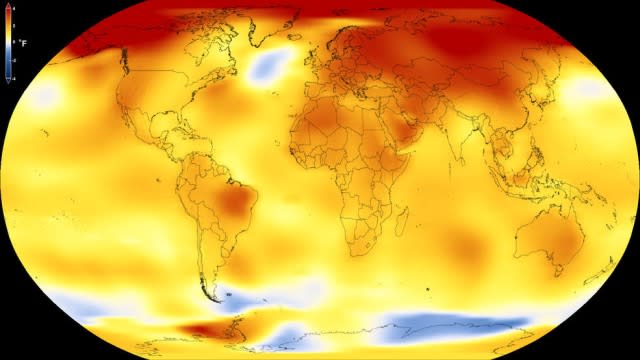The Morning After: Friday, January 19th 2018
Which one is overpriced: the $70 toy or the $48,000 camera?
Hey, good morning! You look fabulous.
Drone rescues, our warming planet and a $48,000 camera were part of yesterday's news highlights, but the big question of the day is whether or not a $70 cardboard toy is overpriced.
There's a point to Hasselblad's crazy 400-megapixel camera
If you judge cameras by megapixels and dollar signs, then Hasselblad just introduced the ultimate model. The H6D-400c can shoot 400-megapixel photos and will cost you $48,000, the price of a well-equipped Tesla Model 3. It does so by combining up to six different exposures from its 100-megapixel, medium-format 53.4 X 40.0mm sensor in a process it calls Multi Shot. Each image is shifted by a pixel, resulting in a much-higher resolution image.
Nintendo Labo: overpriced or innovative?
Nintendo is reinventing imagination, and charging you for the cardboard. While a room of cynical Engadget editors is probably not the target audience (we had one submission from a parent), we have thoughts on the Labo. For better and worse.
China uses facial recognition to monitor ethnic minorities
China is adding facial recognition to its overarching surveillance systems in Xinjiang, a Muslim-dominated region in the country's far west, which critics claim is under abusive security controls. The geo-fencing tools alert authorities when targets venture beyond a designated 300-meter safe zone, according to an anonymous source who spoke to Bloomberg.
Managed by a state-run defense contractor, the "alert project" matches faces from surveillance camera footage to a watchlist of suspects. The pilot forms part of the company's efforts to thwart terrorist attacks by collecting the biometric data of millions of citizens aged between 12 to 65, which is then linked to China's household registration ID cards.
Lifeguard drone completes world-first ocean rescue
Australia's Little Ripper drone has saved a pair of swimmers caught in rough seas in what's thought to be a world-first rescue operation. Lifeguards were busy testing the UAV off Lennox Head as part of New South Wales' $250,000 shark-spotting strategy when the distress call came in. Within 70 seconds, the aerial helper had tracked down the stranded duo and dropped them a flotation pod, which they used to safely make their way to shore.
NASA: 2017 was Earth's second-warmest year since 1880
After careful analysis, NASA has declared that 2017 was the second-warmest year since the end of the 19th century. In a separate study using different analytical methods, National Oceanic and Atmospheric Administration (NOAA) ranked last year as the third warmest in their records. But both agree that, since 2010, the globe has experienced its five hottest years.
Facebook and YouTube are removing Tide Pod Challenge videos
Apparently, adults need intervention to stop people from eating (drinking?) laundry detergent. As a result, YouTube and Facebook have committed to taking down videos of people willingly ingesting Tide pods. It's apparently gotten bad enough that in the first 15 days of 2018, the American Association of Poison Control Centers received as many calls about intentional consumption of laundry pods as it did in the entirety of 2016.
But wait, there's more...
EFF and Lookout release report on Dark Caracal hacking linked to Lebanese intelligence
NASA tests small nuclear reactor that could power a habitat on Mars
The Morning After is a new daily newsletter from Engadget designed to help you fight off FOMO. Who knows what you'll miss if you don't Subscribe.
Craving even more? Like us on Facebook or Follow us on Twitter.
Have a suggestion on how we can improve The Morning After? Send us a note.




















